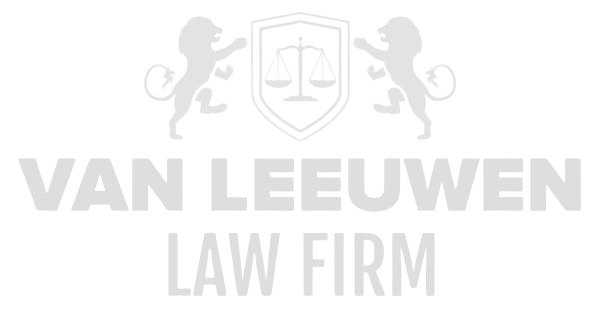In today’s business environment, where the complexity of fraud, bribery, and corruption continues to grow, obtaining deep customer insights is crucial for organizations aiming to combat these serious forms of financial abuse. Customer insights go beyond traditional notions of customer relationships and involve a holistic approach in which companies not only understand their customers’ needs and behaviors but also potential risk factors, such as involvement in fraudulent or corrupt activities.
The challenge is that fraud, bribery, and corruption often remain hidden behind seemingly legitimate customer transactions and behaviors. Gaining detailed insights into customer relationships and behaviors enables organizations to detect suspicious patterns early, identify vulnerabilities in their processes, and take appropriate measures to prevent financial misconduct. This article explores how collecting and analyzing customer insights can contribute to combating fraud, bribery, and corruption, the role technology and data analytics play, and why companies must remain mindful of the ethical and legal implications of customer data analysis.
The Importance of Deep Customer Insights in Detecting Fraud and Corruption
Customer insights are not just about understanding traditional customer needs, such as product preferences or purchasing behavior. In the fight against fraud and corruption, they take on a broader meaning. Companies must delve into the nature of customer relationships, transactions, and behaviors that may indicate fraud, bribery, or other forms of financial misconduct. Obtaining detailed knowledge of the business and personal backgrounds of customers enables companies to recognize early signs of risky behavior, such as unusual payments, opaque contracts, or the absence of clear business objectives.
Fraud and corruption often manifest through complex structures, such as shell companies, bribery of public officials, or money laundering via suspicious business transactions. By acquiring in-depth knowledge of customer relationships, companies can identify these suspicious patterns early and tailor their risk management processes to potential threats. A thorough analysis of customer data provides insight into high-risk customer segments and a detailed overview of all transactions and behaviors that deviate from the norm. This increases the likelihood of detecting suspicious activities before they escalate into serious cases of fraud or corruption.
The use of advanced technologies, such as artificial intelligence (AI) and machine learning, plays an increasingly important role in obtaining customer insights. These technologies can identify patterns in customer behavior that are difficult for humans to detect. By training AI models on historical data, organizations can identify suspicious patterns, such as unusual transactions or changes in customer behavior, in real time. This enables companies to act quickly and take the necessary steps to prevent fraud and corruption.
Leveraging Data Analysis and Technology for Customer Insights
With the vast amount of data available, companies can apply advanced data analysis techniques to gain valuable insights into their customers and their behavior. Data analysis enables large-scale monitoring of customer behavior, both in real time and over extended periods. By combining various data streams, such as financial information, transaction history, behavioral analyses, and even social networks, companies can develop a comprehensive picture of their customers. This allows them to identify deviations or risk factors more quickly.
Predictive data analysis tools are indispensable in the fight against fraud, bribery, and corruption. By combining historical data with machine learning algorithms, companies can detect patterns that indicate criminal activities. For example, by analyzing a customer’s transaction history, unusual payment flows can be identified that may indicate money laundering or other forms of financial abuse. This enables organizations to identify suspicious customers and take action before the damage grows.
Another important aspect of data analysis in customer insights is the ability to segment customers based on risk profiles. Not all customers pose the same risk, and a refined risk assessment based on detailed data helps companies focus their efforts on the riskiest customers. This prevents unnecessary resource allocation for low-risk customers and concentrates attention on customers with a higher potential for fraud or corruption.
However, the use of advanced technologies to obtain customer insights also raises important ethical and legal issues. Companies must ensure compliance with privacy regulations, such as the European General Data Protection Regulation (GDPR), when collecting and analyzing customer data. Mishandling customer data can lead to severe legal consequences and reputational damage. Therefore, companies must find a balance between gaining valuable insights and respecting their customers’ privacy.
Customer Insights as a Foundation for Effective Risk Analysis and Compliance
Customer insights form the foundation for an effective risk analysis and compliance strategy. Instead of adopting a reactive stance toward fraud and corruption, companies can develop a preventive strategy by proactively gaining insight into customer behavior. Knowing which customers pose a high risk enables companies to adjust their due diligence processes, such as conducting more extensive background checks or requiring additional verification of business transactions.
Customer insights allow organizations to focus their compliance efforts on areas of greatest risk. For example, by monitoring customers active in countries with high corruption risk or customers involved in activities sensitive to fraud. This not only helps prevent potential misconduct but also ensures compliance with stringent anti-money laundering and anti-corruption laws, such as the Dutch Anti-Money Laundering and Anti-Terrorist Financing Act (Wwft) or the U.S. Foreign Corrupt Practices Act (FCPA).
By effectively leveraging customer insights, companies can adopt a risk-based approach that enables them to respond adequately to risky situations. This is essential for creating a robust and compliant organization capable of withstanding the threats of fraud, bribery, and corruption. Gaining deep insights into customers helps companies not only identify potential risks but also strengthens their overall risk management and compliance strategies.
The Importance of Customer-Centric Communication and Ethics
While technology and data analysis are essential for obtaining customer insights, the human aspect must not be overlooked. Customer insights should also be used to promote ethical communication and build trustful relationships with customers. Organizations must be aware of the impact of their actions on customer relationships and ensure that collected data and analyses are handled transparently and ethically.
Ensuring ethical customer relationships includes creating clear communication channels for reporting suspicious activities or concerns about fraud and corruption. This not only strengthens internal processes but also creates a culture in which customers feel supported to report irregularities. Additionally, it enables companies to gather customer feedback on their processes and improve their risk management and compliance systems where necessary.
Customer Insights as an Essential Tool in the Fight Against Fraud and Corruption
Customer insights play a crucial role in combating serious fraud, bribery, and corruption. By gaining in-depth understanding of customer behavior and relationships, companies can detect risks much earlier and better respond to the increasingly complex threats of financial misconduct. Technologies such as artificial intelligence and data analytics provide valuable support in identifying suspicious patterns, but ethical considerations and regulatory compliance must always come first.
By effectively combining customer insights with robust risk management strategies, organizations can significantly enhance their ability to detect and prevent fraud and corruption. This not only strengthens the integrity of the organization but also contributes to the broader social responsibility of companies to operate honestly and transparently in an increasingly complex world.















